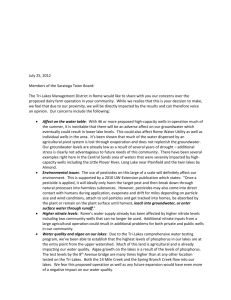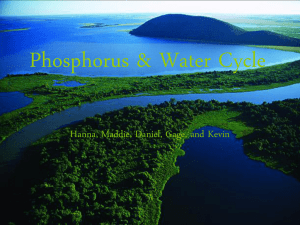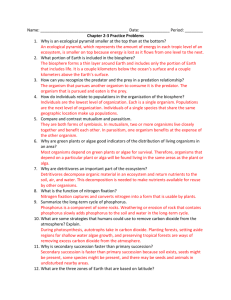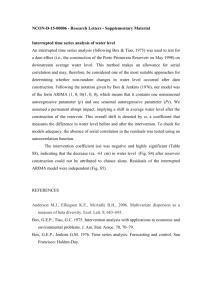Chlorophyll and phosphorus in lakes
advertisement
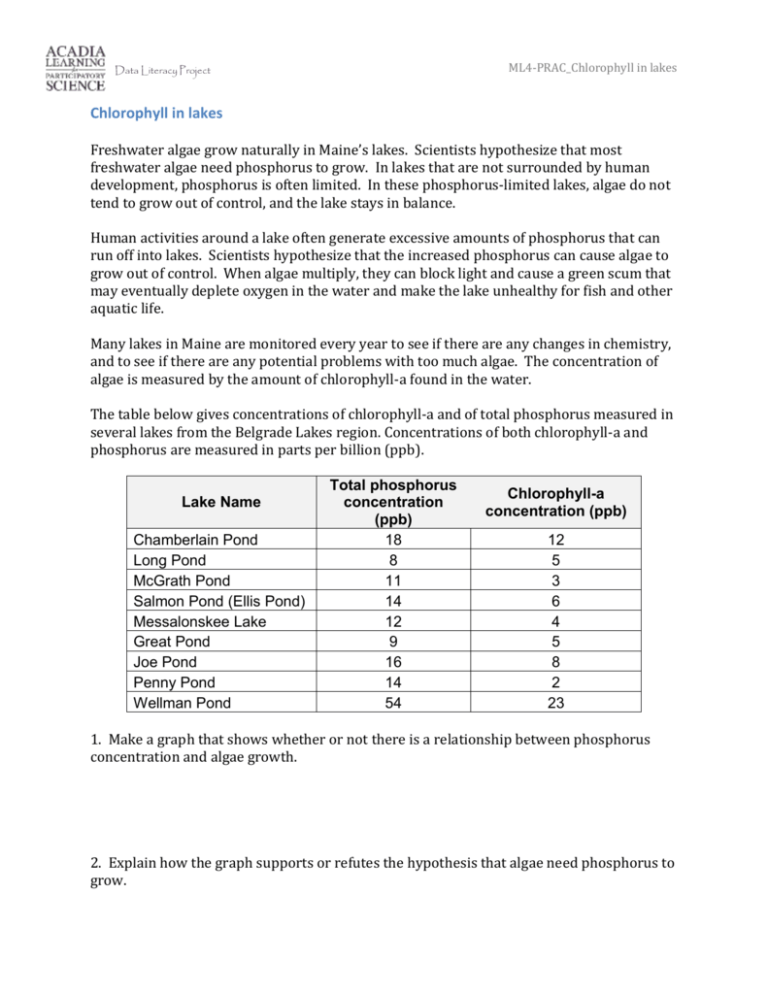
ML4-PRAC_Chlorophyll in lakes Data Literacy Project Chlorophyll in lakes Freshwater algae grow naturally in Maine’s lakes. Scientists hypothesize that most freshwater algae need phosphorus to grow. In lakes that are not surrounded by human development, phosphorus is often limited. In these phosphorus-limited lakes, algae do not tend to grow out of control, and the lake stays in balance. Human activities around a lake often generate excessive amounts of phosphorus that can run off into lakes. Scientists hypothesize that the increased phosphorus can cause algae to grow out of control. When algae multiply, they can block light and cause a green scum that may eventually deplete oxygen in the water and make the lake unhealthy for fish and other aquatic life. Many lakes in Maine are monitored every year to see if there are any changes in chemistry, and to see if there are any potential problems with too much algae. The concentration of algae is measured by the amount of chlorophyll-a found in the water. The table below gives concentrations of chlorophyll-a and of total phosphorus measured in several lakes from the Belgrade Lakes region. Concentrations of both chlorophyll-a and phosphorus are measured in parts per billion (ppb). Lake Name Chamberlain Pond Long Pond McGrath Pond Salmon Pond (Ellis Pond) Messalonskee Lake Great Pond Joe Pond Penny Pond Wellman Pond Total phosphorus concentration (ppb) 18 8 11 14 12 9 16 14 54 Chlorophyll-a concentration (ppb) 12 5 3 6 4 5 8 2 23 1. Make a graph that shows whether or not there is a relationship between phosphorus concentration and algae growth. 2. Explain how the graph supports or refutes the hypothesis that algae need phosphorus to grow. ML4-PRAC_Chlorophyll in lakes ML4-PRAC_Chlorophyll in lakes Teaching notes: Chemistry, ecology Correlation Although the same relationship will appear with chlorophyll and phosphorus on either axis, in this context total phosphorus is most likely the independent variable because the algae are probably growing in response to more phosphorus being available as a nutrient. Explanations might include the following points: More chlorophyll-a means there are more algae in the water because algae contain chlorophyll. (Chlorophyll-a is a proxy for algae growth). There is a positive relationship between algae and phosphorus concentrations because the line of best fit slopes upward to the right. That means the more phosphorus there is, the move chlorophyll-a there is. There is more variability at lower concentrations of phosphorus (ie. less than about 12 ppb). The low points are more scatted from the line of best fit. One lake (Wellman Pond) had very high concentrations of both P and chlorophyll-a compared with the other lakes. (Make sure students don’t throw out this “outlier”.) For extended discussion: 1. What human activities can cause excess phosphorus to run off into lakes?
